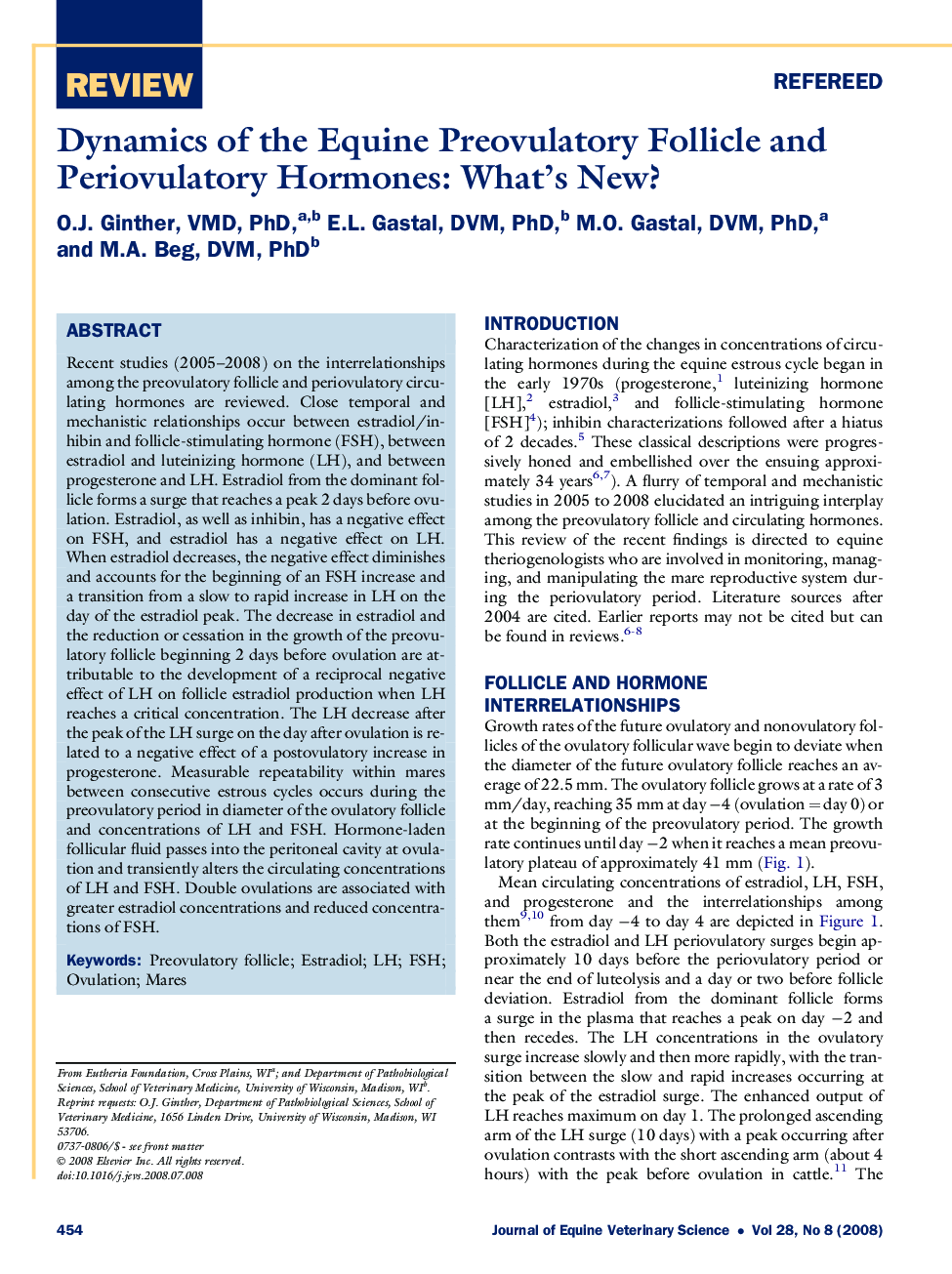| Article ID | Journal | Published Year | Pages | File Type |
|---|---|---|---|---|
| 2396287 | Journal of Equine Veterinary Science | 2008 | 7 Pages |
Recent studies (2005–2008) on the interrelationships among the preovulatory follicle and periovulatory circulating hormones are reviewed. Close temporal and mechanistic relationships occur between estradiol/inhibin and follicle-stimulating hormone (FSH), between estradiol and luteinizing hormone (LH), and between progesterone and LH. Estradiol from the dominant follicle forms a surge that reaches a peak 2 days before ovulation. Estradiol, as well as inhibin, has a negative effect on FSH, and estradiol has a negative effect on LH. When estradiol decreases, the negative effect diminishes and accounts for the beginning of an FSH increase and a transition from a slow to rapid increase in LH on the day of the estradiol peak. The decrease in estradiol and the reduction or cessation in the growth of the preovulatory follicle beginning 2 days before ovulation are attributable to the development of a reciprocal negative effect of LH on follicle estradiol production when LH reaches a critical concentration. The LH decrease after the peak of the LH surge on the day after ovulation is related to a negative effect of a postovulatory increase in progesterone. Measurable repeatability within mares between consecutive estrous cycles occurs during the preovulatory period in diameter of the ovulatory follicle and concentrations of LH and FSH. Hormone-laden follicular fluid passes into the peritoneal cavity at ovulation and transiently alters the circulating concentrations of LH and FSH. Double ovulations are associated with greater estradiol concentrations and reduced concentrations of FSH.
